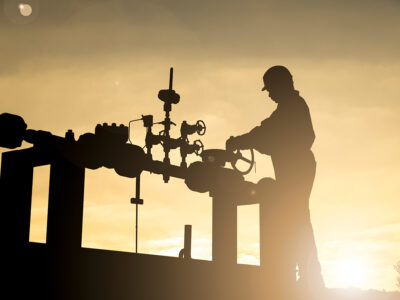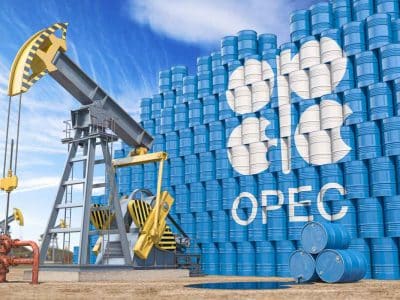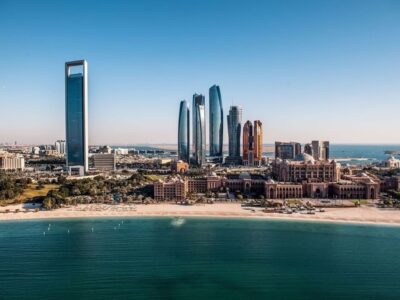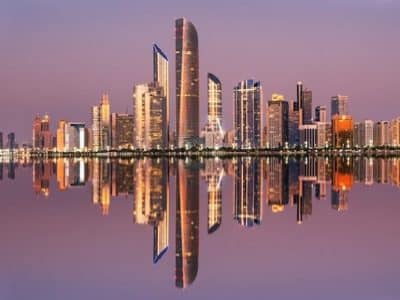The Gas Cities concept has the potential to create long-term economic stability, says Badr Jafar.
As the most prolific hydrocarbon region in the world, the Middle East has long been attempting to add value to its most vital exports. With Saudi Arabia spending vast amounts in developing its petrochemicals industry, one firm, in particular, is looking at gas as a way to earn extra revenue for regional nations.
“Most international oil companies (IOCs) go into a country to source commodities for export,” says Badr Jafar, executive director of Crescent Petroleum and executive chairman of Gas Cities, a joint venture between Crescent Petroleum and Dana Gas. “With natural gas that usually entails pipeline projects and LNG shipping in order to export it – once that gas molecule has reached the border, you’ve exchanged its value and that’s it.”
Jafar says that using the gas molecule within the exporting country’s borders to maximise the netback value of the gas can have an economic multiplier effect. Often, the power generation sector receives the greatest benefit, which in turn encourages added foreign direct investment, mass employment, training, education and so on.
“Natural gas is a great facilitator to build political, social and economic bridges between two countries,” continues Jafar. “I think that gas has something that oil doesn’t and that is the fact it can act like an umbilical cord between two nations, which then promotes long-term stability, as natural gas projects tend to be measured in decades not years.”
From the industrial perspective, the Crescent executive believes that one strong solution is his firm’s Gas Cities concept.
The Gas Cities Ltd joint venture company has been set up to explore the possibility of clustering various industries so that by-products and waste from one sector can then be used as feedstocks and energy for its neighbours.
“The concept of Gas Cities is based on the effective utilisation of natural gas as feedstock, thereby maximising the value of industrial outputs. In the Gas Cities, available natural gas is converted into economically viable petroleum related products & derivatives by systematically utilising the operational synergies and economies of scale arising from clustered industrial units. Designed to be self-sustaining, Gas Cities offers services that will satisfy all industrial/business needs.
Highly developed infrastructure ensures smooth logistics, while service facilities like banks, financial centres, engineering and business consultancies offer increased in-house flexibility and inter-cluster synergies.”
Source:
“In the Gas Cities, we would like to be able to develop the gas resources ourselves, and price that feedstock according to what the industries can afford,” explains the Crescent executive. “That would incentivise an industry to be efficient, and simultaneously allow us to share in the profits of that industry.”
As an example, Jafar referred to the ammonia industry. If the price of ammonia doubles, the ammonia sector should pay more for its feedstock. “Likewise, if the commodity price falls, we go down together, because we always want to have a happy tenant – as long as we are both able to share in the good times.”
While this concept would be admittedly difficult to establish in the more mature local markets, Jafar has set his sights on potential high-growth sectors, such as Iraq. Crescent Petroleum already has a long heritage in the country, and was instrumental in the construction of a 180-kilometre gas pipeline to provide feedstock for two independent power plants (1,500MW and 750MW) ordered by the Kurdistan Regional Government.
“Iraq in this regard has huge potential, because it has an opportunity to start afresh, and build the necessary framework today,” said Jafar. “The biggest problem Iraq faces is to break out of that negative mindset and influence that is coming from some of its neighbours, who don’t necessarily want to see Iraq flourish as fast as it can.”
Studies conducted by Gas Cities indicate that there are three areas where the concept would add the most value. In each of those three areas, the firm has reached beyond the preliminary discussion stage.
“There’s the Kurdistan region of Iraq, where we have identified a 42 square kilometre piece of land in the north,” said Jafar. The second Gas City is in Egypt, where we are currently identifying potential sites, and where we are now working with the Egyptian government. In addition, in Yemen we have conducted a pre-feasability study along with the Yemeni government to identify a location for the site, and signed an MoU with the government a few weeks ago.
“Yemen is a great example because they know that have gas resources, but their only use at the moment is for LNG export,” Jafar continues.
“Most of the PSAs in Yemen only extend the title holders to the oil, not the associated gas, so there has been no incentive for companies to develop the gas infrastructure. There is now a drive to change some of those contracts to cover titles to the gas too.”
The Yemen Gas City Company is planning a US$20bn industrial city in Hodiedah. Powered by gas, the industrial complex will house petrochemical and heavy manufacturing plants, as well cement plants and power stations.
A memorandum of understanding (MoU) for the project has been signed by the UAE’s Dana Gas and Crescent Petroleum, which are planning to build four gas cities in the Middle East. As well as creating upwards of 90,000 jobs, the gas city is expected to attract US$15bn-US$20bn in foreign investment over the next three decades.







